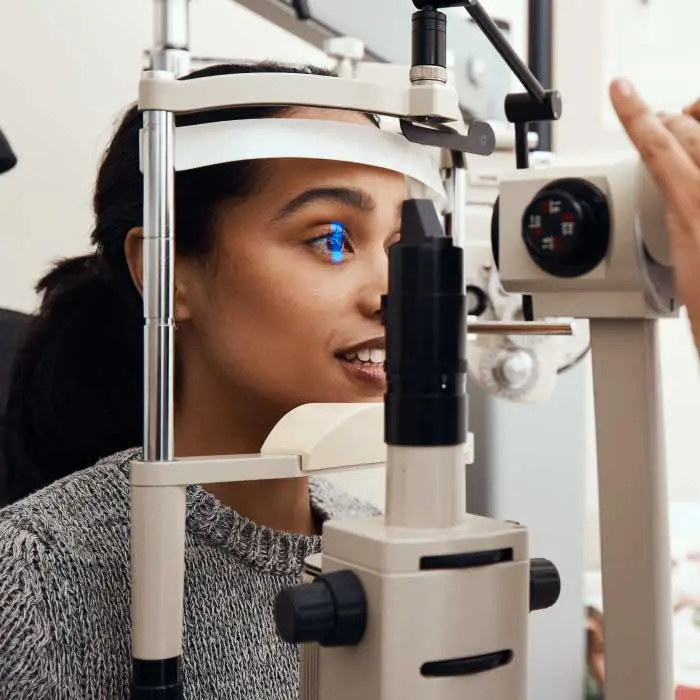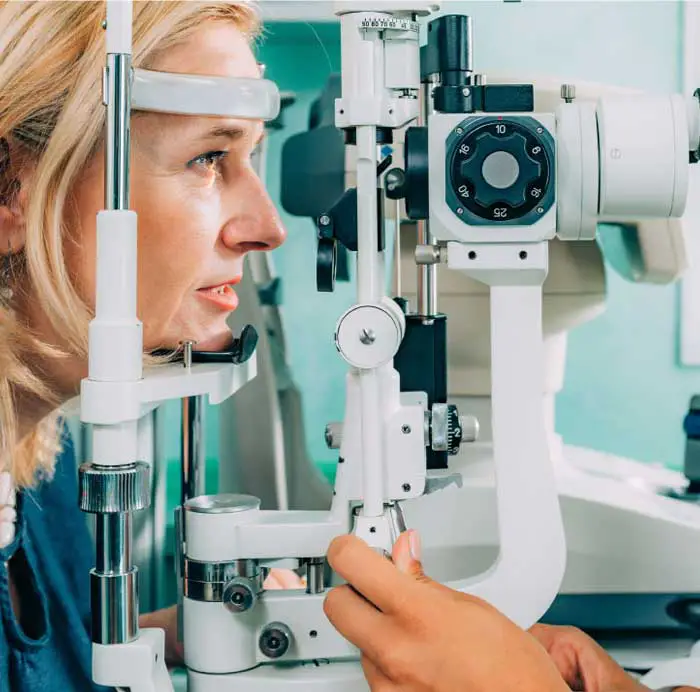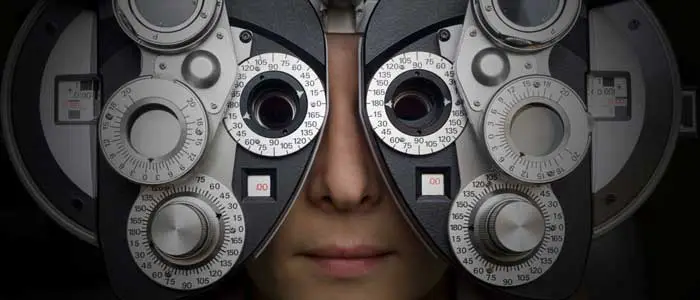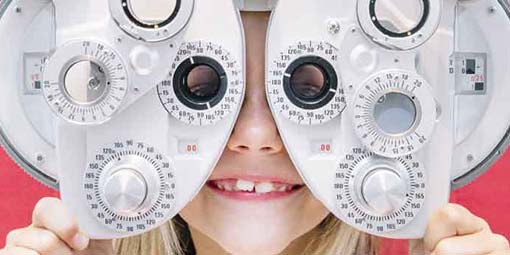Retinoschisis - Symptoms, Causes and Treatment
07-04-2024
What is Retinoschisis?
Retinoschisis is a rare eye condition that affects the retina, the light-sensitive tissue at the back of the eye. In retinoschisis, the layers of the retina separate from each other, leading to impaired vision. This condition can be present at birth or develop later in life, and it can affect both eyes. People with retinoschisis may experience blurred or distorted vision, difficulty seeing in low light, and in severe cases, vision loss. Regular eye exams are important for early detection and management of retinoschisis.What Are The Causes Of Retinoschisis?
Retinoschisis is caused by a genetic mutation that affects the structure and function of the retina. This mutation leads to the splitting or separation of the layers of the retina, resulting in decreased visual acuity and potential vision loss. The specific genetic mutations that cause retinoschisis vary from person to person, making it a complex and challenging condition to understand and treat. Researchers continue to study the underlying mechanisms of retinoschisis in the hope of developing more effective treatments in the future.What Are The Risk Factors For Retinoschisis?
Risk factors for Retinoschisis include age, particularly individuals over the age of 40, as well as being male. A family history of the condition may also increase the likelihood of developing Retinoschisis. Additionally, certain medical conditions such as myopia (nearsightedness) and other hereditary eye disorders can also be associated with an increased risk of developing Retinoschisis. Regular eye exams are important for early detection and management of this condition, especially for those with risk factors.What Are The Symptoms Of Retinoschisis?
Symptoms of Retinoschisis may include blurred or distorted vision, difficulty seeing fine details, decreased peripheral vision, and occasionally double vision. Patients may also experience difficulties with night vision and light sensitivity. In some cases, individuals with Retinoschisis may notice a shadow or curtain-like effect in their visual field. These symptoms can vary in severity depending on the location and extent of the retinoschisis within the retina. Regular eye exams are important for early detection and monitoring of Retinoschisis to prevent potential complications and vision loss.How is Retinoschisis Diagnosed?
Retinoschisis is diagnosed through a comprehensive eye examination conducted by an optometrist or ophthalmologist. During the examination, the eye doctor will assess the patient's visual acuity, perform a refraction test to determine the prescription needed for corrective lenses, and evaluate the health of the retina using specialized instruments. One key tool used in diagnosing retinoschisis is called optical coherence tomography (OCT), which provides detailed cross-sectional images of the layers of the retina. This allows the doctor to identify any abnormalities or structural changes in the retina that may indicate the presence of retinoschisis. In some cases, additional testing such as visual field testing or electroretinography may be performed to further evaluate the condition.How is Retinoschisis Treated?
Retinoschisis is typically managed through observation and monitoring by an optometrist or ophthalmologist. In cases where the condition is causing significant vision problems, treatment may be necessary. One common treatment option for Retinoschisis is laser therapy, which can help to seal off areas of the retina that are affected by the schisis. Another option is surgery, which can be used to remove any abnormal tissue or fluid that may be causing the schisis. In some cases, injectable medications may also be used to help reduce swelling and improve vision. It is important for individuals with Retinoschisis to work closely with their eye care provider to determine the best course of treatment for their specific situation.Is There A Cure For Retinoschisis?
As an optometrist, I can confirm that there is currently no known cure for Retinoschisis. However, there are treatment options available to help manage the condition and improve vision for those affected. It is important for patients with Retinoschisis to work closely with their eye care provider to develop a personalized treatment plan that addresses their specific needs and concerns. Regular eye exams and monitoring are essential in managing the progression of the disease and maintaining overall eye health.How Can Retinoschisis Be Prevented?
Unfortunately, there is currently no known way to prevent Retinoschisis from occurring. However, regular eye exams are crucial in detecting any changes in your vision or eye health early on. By maintaining a healthy lifestyle, including a balanced diet and protecting your eyes from harmful UV rays, you can help support overall eye health and potentially reduce the risk of developing certain eye conditions. If you have a family history of eye diseases such as Retinoschisis, it is important to inform your optometrist so they can monitor your eye health more closely.Regular eye exams with advanced technologies are essential for the early diagnosis and treatment of Retinoschisis. Schedule an eye exam with an optometrist today!
Schedule An Appointment
Adult Eye Exams
Our advanced eye exams consist of 25+ modern tests and digital scans to assess eye health, function, and visual acuity.

Child Eye Exams
Give your child a clear future with an annual eye exam from our experienced Edmonton optometrists.

Senior Eye Exams
Maintain your vision through your golden years with gold standard eye care from the optometrists at our Edmonton eye clinic.

Contact Lens Eye Exams
Our eye exams for contact lens wearers include test and digital scans to assess eye health, function, visual acuity, and lens fit.

Diabetic Eye Exams
Managing diabetes requires regular eye exams to ensure that diabetes is not causing irreversible vision loss.

Dilated Eye Exams
Dilating the eyes enables our Edmonton optometrists to see more of the eye so that you many never see less.
Our Edmonton Eye Exams Are Comprised Of 4 Phases Of Evaluation

1. Eye Exam Pre-Testing
Corneal Thickness | Intraocular Pressures | Visual Field
Pre-testing is a detailed process that gathers all necessary information for the optometrist in advance of the optometrist-administered eye examination. This process involves completing a detailed patient history, as well as a series of standard tests. Pre-testing is an essential part of the comprehensive eye exam process, providing valuable information and visuals for both the optometrist and the patient.
More About Pre-Testing »
2. Advanced Diagnostic Testing
Retinal Photography, OCT, Topography
eye-deology Vision Care differentiates itself from other clinics by having the most advanced modern diagnostic specialty testing equipment. Specialty equipment, such as a wide-angle high-resolution retinal imager, Optical Coherence Tomography (OCT), Humphrey Visual Field Analyzer and corneal topographer, ensures that patients receive the best comprehensive eye care.
More About Advanced Testing »
3. Optometrist Examination
Health Assessment & Disease Diagnosis
eye-deology Vision Care Edmonton optometrists perform a multitude of tests and assessments to evaluate ocular health, eye coordination, and visual acuity. In addition, they also evaluate the results of the tests and scans performed during pre-testing. As part of patient education, our optometrists also take the time to show and explain results to patients.
More About Doctor Exam »
4. Eye Glass Consult
Prescription | Lens Selection | Digital Fitting
If you require corrective lenses to improve your vision, our licensed opticians will customize their fit to your unique attributes, needs, lifestyle, and budget. Our opticians are happy to provide you with information about the latest eyeglass frame and lens technologies available so you can make informed decisions and begin seeing and looking your best.
More About Eyewear Consult »